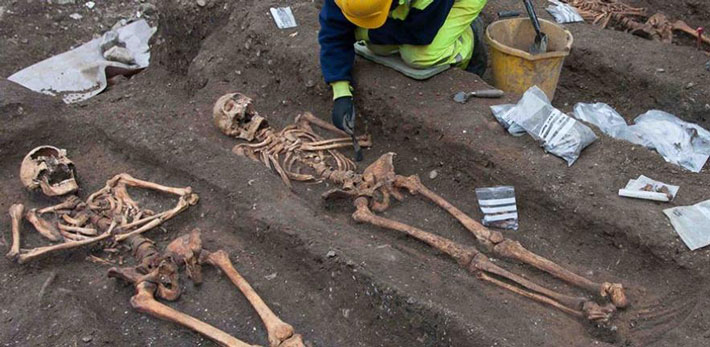 CAMBRIDGE, ENGLAND—According to a statement released by the University of Cambridge, friars living in Cambridge during the medieval period were almost twice as likely to be infected with intestinal parasites than the city’s general population. Research team member Tianyi Wang used a microscope to look for surviving parasite eggs in soil samples taken from the areas around the pelvises of people who had been buried in a local parish church cemetery, and from the cemetery at the site of the city’s medieval Augustinian friary. (The remains of monks were identified by the metal belt buckles associated with their order.) The study determined that 58 percent of the monks were infected with worms, compared to 32 percent of the townspeople. Roundworm was the most common parasite detected, but whipworm infection was found as well. Both of these parasites are spread through poor sanitation, Wang explained. Yet most people living at the time were likely to use cesspit toilets, while most Augustinian monasteries were equipped with water-rinsed latrines and handwashing facilities. Team leader Piers Mitchell concluded that the monks may have facilitated infection through using their own feces to fertilize their vegetable gardens, or by purchasing fertilizer that contained human or pig excrement. Read the original scholarly article about this research in the International Journal of Paleopathology. For more on Cambridge's Augustinian friary, go to "Common Ground."
CAMBRIDGE, ENGLAND—According to a statement released by the University of Cambridge, friars living in Cambridge during the medieval period were almost twice as likely to be infected with intestinal parasites than the city’s general population. Research team member Tianyi Wang used a microscope to look for surviving parasite eggs in soil samples taken from the areas around the pelvises of people who had been buried in a local parish church cemetery, and from the cemetery at the site of the city’s medieval Augustinian friary. (The remains of monks were identified by the metal belt buckles associated with their order.) The study determined that 58 percent of the monks were infected with worms, compared to 32 percent of the townspeople. Roundworm was the most common parasite detected, but whipworm infection was found as well. Both of these parasites are spread through poor sanitation, Wang explained. Yet most people living at the time were likely to use cesspit toilets, while most Augustinian monasteries were equipped with water-rinsed latrines and handwashing facilities. Team leader Piers Mitchell concluded that the monks may have facilitated infection through using their own feces to fertilize their vegetable gardens, or by purchasing fertilizer that contained human or pig excrement. Read the original scholarly article about this research in the International Journal of Paleopathology. For more on Cambridge's Augustinian friary, go to "Common Ground."
Study Investigates Rate of Parasite Infections in a Medieval City
